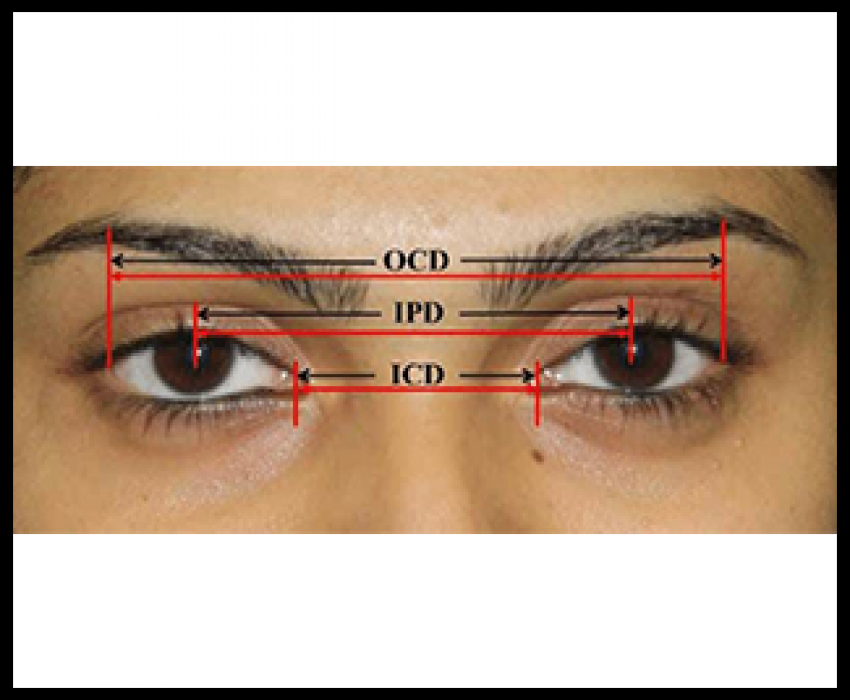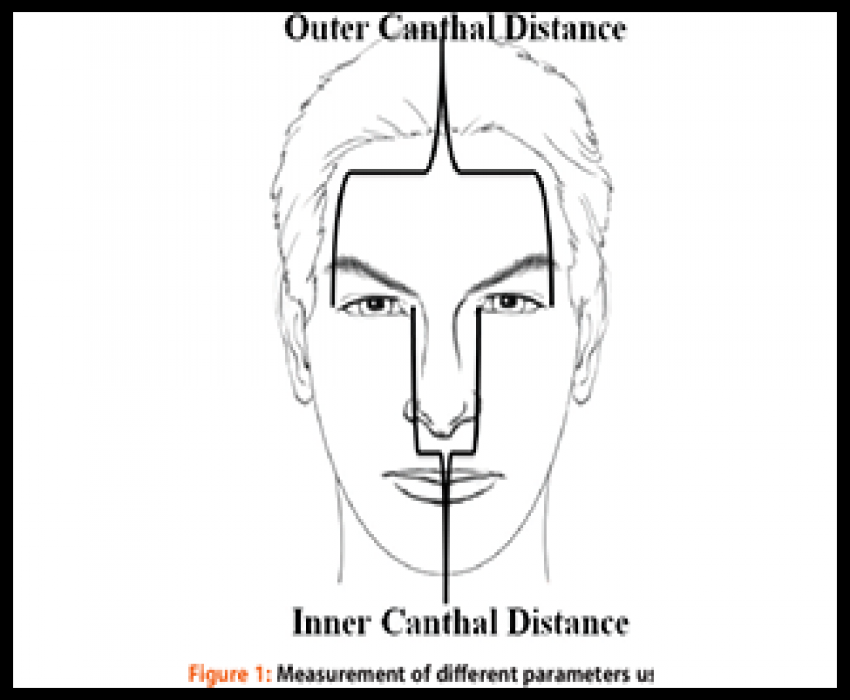The local data on inner canthal distance, outer canthal distance, and canthal index may signify the differential developmental pattern resulting from various factors such as gender, age, genetic, and climate and may help in craniofacial surgery, orthodontists, congenital anomalies, and forensic science.
The objective of the study is to compare anthropometric dimensions related to inner canthal distance, outer canthal distance, and canthal index. The outer and inner canthal measurements of the Nepali population were observed in 318 normal males and females. Out of total samples, 156 males and 162 females of age 17 – 25 years were taken for study since the study was done in medical college preclinical students. The inner and outer canthal distances were measured by using a digital sliding caliper graduated in millimeters. The canthal index was calculated.
There was statistically significant difference in inner canthal distance among females (31.84± 2.22)mm and males (34.48 ±3.35)mm (P<0.001). We found a statistically significant difference in the outer canthal distance among females 94.30±3.42 mm and males 96.54±4.77mm (P<0.001); moreover, there was significant difference in mean canthal index among females and males (33.77±2.42 and 35.79±3.76; P<0.001) respectively.
This work has generated normative values for the canthal dimensions of the Nepali population. The study would be of benefit not only to anthropometrist, oral and maxillofacial surgeons, plastic surgeons, forensic medicine, but also to orthodontists and Dysmorphologists.





